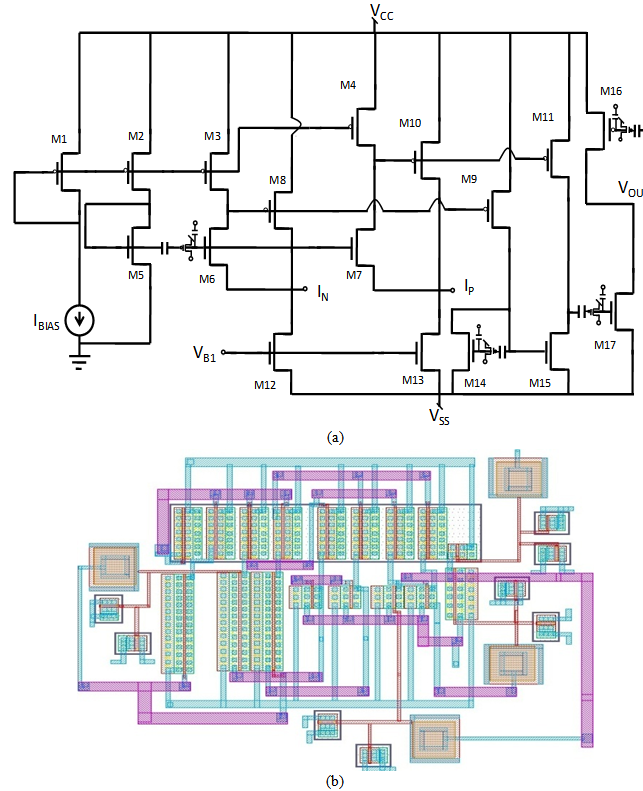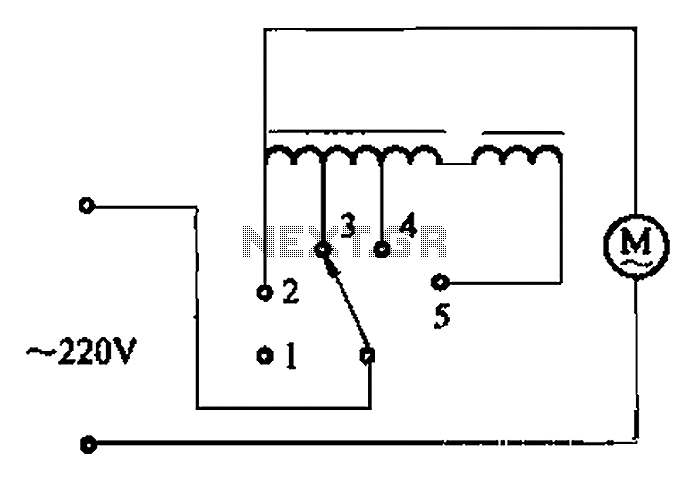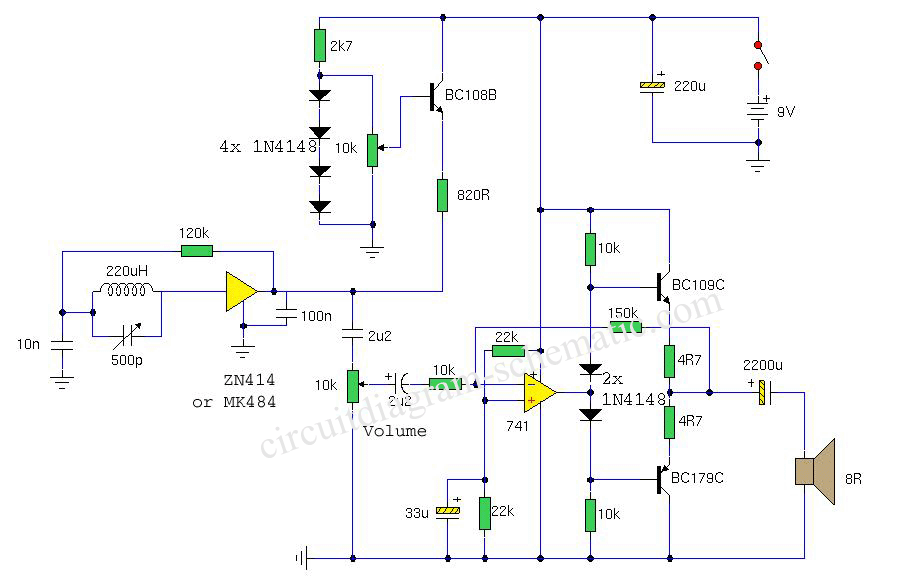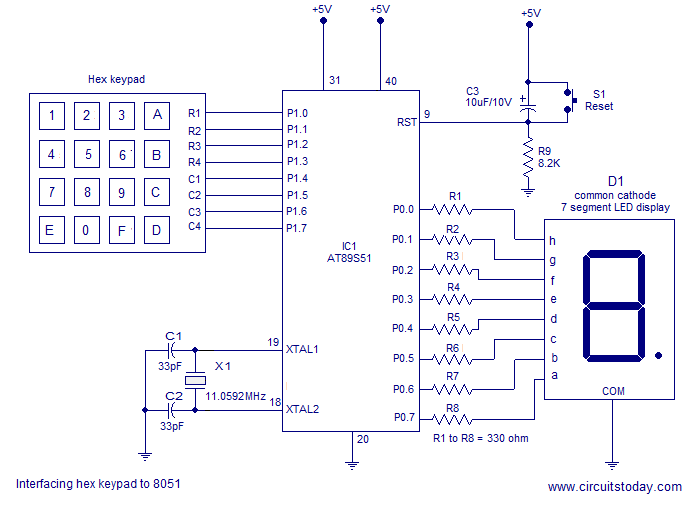
deriving free energy from air using sec
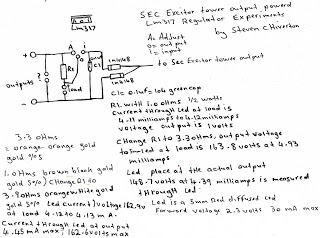
The following experiment demonstrates how Mr. Steven successfully extracted free energy from air using his home-built secondary exciter coil tower. He utilized this energy to power a small LM317 power supply unit. During the process, he hand-wound his coils without using varnish, opting instead for a two-part Araldite mix applied with his fingers while rotating the coil winder, allowing for faster drying and increased strength. Mr. Steven also produces his own colloidal silver and plans to create colloidal silver using the same voltage and RF energy sourced from the exciter tower, with hopes of developing a rejuvenated super water. He has documented various circuits powered by the single output wire from the secondary exciter coil tower, including a fast NiMH battery charger and a high-voltage capacitor charger. Initial results from tests on nickel metal hydride rechargeable batteries were mixed; in one test, a battery charged up to 12 volts, exceeding its capacity, while in another test, a battery discharged rapidly after being topped up. Additionally, there were instances where the measured battery voltage appeared to self-charge, raising questions about the influence of RF currents and voltage from the exciter tower on the batteries. He has shared seven pictures of the exciter coil tower and the voltage and current regulator circuits, noting that adding two Fremenko plug diodes allows them to operate from a one-wire output from the exciter tower. Mr. Steven also conducted tests with another LM317 regulator circuit to optimize current and voltage outputs for use with a joule thief. During experiments with the newest regulator circuit powered by the exciter tower, he tested a neon light, which illuminated, indicating sufficient voltage output. Further testing showed that a second neon light lit up when connected to both the positive and negative load terminals, and the first neon grew brighter during this process. After turning off the driver circuit to the exciter tower, the neon in the LM317 circuit began to flash when the negative output pin was touched, despite the power to the driver being off. Removing the power supply resulted in the neon ceasing to flash, raising questions regarding the energy source responsible for the neon lighting up. Additional tests continued with the LM317 voltage regulator circuit and the flashing neon.
The experiment exemplifies the potential of utilizing a secondary exciter coil tower for energy extraction and its applications in powering electronic circuits. The LM317 voltage regulator circuit serves as a key component in regulating output voltage and current, which is essential for ensuring stable operation of connected devices. The choice of materials, such as the two-part Araldite for coil winding, highlights the importance of mechanical strength and quick curing in the construction of coils.
The testing of neon lights as indicators of voltage presence provides valuable insight into the operational characteristics of the circuits being developed. The unexpected behavior of the neon lights when the power supply was disconnected suggests that there may be residual or induced voltages at play, possibly due to electromagnetic effects from the exciter tower. This phenomenon warrants further investigation to understand the underlying principles governing energy transfer in these systems.
Moreover, the mixed results observed in battery charging tests emphasize the need for comprehensive analysis and optimization of circuit designs. The interactions between the RF energy from the exciter tower and the internal chemistry of the batteries could lead to innovative energy storage solutions. The documentation of various circuit designs and their performance offers a foundation for future experimentation and refinement.
Overall, this experiment not only showcases the ingenuity of the design but also opens avenues for further exploration in the field of energy harvesting and circuit efficiency. The continuous testing and modification of circuits will contribute to advancements in the practical applications of free energy technologies.The following experiment shows how interestingly Mr. Steven could draw free energy from air using his home-built sec exciter coil tower, he used it to a feed a small LM317 power supply unit and made it work successfully. Read more. "When i hand wind my coils i didnt use varnish its to soft and takes to long to dry, so i mix a 2 part araldite mix t
ogether then use my fingers to apply it while rotating the coil winder by hand so the araldite dries fast and thick and is stronger. i make my own colloidal silver and soon ill be making the first ever colloidal silver using the same voltage and energy or RF current i get from the sec tower so i hope the energy rf currents and the voltage can make some kind of rejuvenated super water.
ill take some pictures when i get the chance to of all the circuits ive made that are powered from the single output wire of an sec exciter tower including my fast nmh battery charger and high voltage capacitor charger etc etc at first the results of the nickel metal hydride rechargeable battery test was mixed in one test the battery had some voltage left in it and gained a charge up to 12 volts well past the batterys capacity, then another test a battery went flat fast after topping it up using the circuit and another test the measured battery voltage was going up as if self charging itself, so i wondered if the rf currents and voltage from the sec exciter tower did something to whats inside the battery, its a long story. Here are 7 pictures of the sec exciter coil tower powered voltage and current regulator circuits adding just the 2 fremenko plug diodes to these enables them to be powered from a one wire output from the sec exciter coil tower ive got the video of these being tested and its amazing".
Heres some tests i did with another lm317 regulator circuit i built to try get the best current and voltage outputs so far it would be suitable to use it to a joule thief to try get a better current output from it. DURING EXPERIMENTS OF MY NEWEST SEC EXCITER, TOWER POWERED REGULATOR CIRCUIT, I DECIDED TO USE A SPOT ON THE CIRCUIT BOARD OF MY NEWEST LM317 SEC EXCITER, TOWER POWERED REGULATOR CIRCUIT, SO I DECIDED TO TEST A NEON OUT ON IT SO I SOLDERED IT INTO THAT SPOT IT WAS MARKED WITH A QUESTION MARK ON THE OTHER CIRCUIT ABOVE, THE NEON LIGHT UP SO THERE WAS MORE THAN ENOUGH VOLTAGE COMING OUT OF THE OUTPUT OF THAT CIRCUIT TO LIGHT UP THE NEON.
THEN I DECIDED TO TRY ANOTHER NEON AT THE LOAD AREA SO I HELD A NEON BY ONE LEG AND IT LIT UP WHEN I TOUCHED THE OTHER ONE LEG TO THE POSITIVE ON THE LOAD AND IT EVEN LIT UP WHEN I TOUCHED THE NEON LEG TO THE NEGATIVE OF THE LOAD, AND ALSO WHEN I LIT THE NEON UP AT THE LOAD POINTS THE OTHER NEON NEAR THE OUTPUTS GOT BRIGHTER. SO I TURNED THE DRIVER CIRCUIT TO THE SEC EXCITER TOWER OFF AND I WAS HOLDING THE LM317 REGULATOR BY THE BOARD AND AS I TOUCHED THE NEGATIVE OUTPUT PIN THE NEON IN THE LM317 SEC EXCITER POWERED REGULATOR CIRCUIT STARTED TO FLASH ON AND OFF.
AND YET THE POWER TO THE DRIVER WAS OFF SO WHAT THE HELL WAS DOING THIS THE CLOSEST POWER SOURCE TO THE CIRCUIT WAS THE SWITCHED OFF 9 VOLTS DC 500 MILLI AMPS POWER SUPPLY WIRE RUNNING TO THE SEC DRIVER CIRCUIT WHICH WAS SWITCHED OFF SO WHAT THE HELL COULD 9 VOLTS DC AT 500 MILLI AMPS REGULATED POWER SUPPLY HAD TO DO WITH THE NEON FLASHING ON AND OFF ITS DC REGULATED SO WHATS THE CONNECTION. I PULLED THE POWER SUPPLY OUT OF THE PLUG TO THE SWITCHED OFF CIRCUIT AND THE NEON STOPPED FLASHING. NOW EVEN 9 VOLTS AT 500 MILLI AMPS IS NOT ENOUGH TO FLASH A NEON AND THE DRIVER CIRCUITS POWER IS OFF AND THE POWER INPUT LED IS OFF SO WHERES THE ENERGY, COUPLING COMING FROM TO LIGHT THE NEON.
I did some more testing the sec exciter coil tower powered lm317 voltage regulator circuit and with the neon blinking on and off with the power to the circuit onand the power switch at the circuit in the off position, i measured the voltage input into the driver cir 🔗 External reference
The experiment exemplifies the potential of utilizing a secondary exciter coil tower for energy extraction and its applications in powering electronic circuits. The LM317 voltage regulator circuit serves as a key component in regulating output voltage and current, which is essential for ensuring stable operation of connected devices. The choice of materials, such as the two-part Araldite for coil winding, highlights the importance of mechanical strength and quick curing in the construction of coils.
The testing of neon lights as indicators of voltage presence provides valuable insight into the operational characteristics of the circuits being developed. The unexpected behavior of the neon lights when the power supply was disconnected suggests that there may be residual or induced voltages at play, possibly due to electromagnetic effects from the exciter tower. This phenomenon warrants further investigation to understand the underlying principles governing energy transfer in these systems.
Moreover, the mixed results observed in battery charging tests emphasize the need for comprehensive analysis and optimization of circuit designs. The interactions between the RF energy from the exciter tower and the internal chemistry of the batteries could lead to innovative energy storage solutions. The documentation of various circuit designs and their performance offers a foundation for future experimentation and refinement.
Overall, this experiment not only showcases the ingenuity of the design but also opens avenues for further exploration in the field of energy harvesting and circuit efficiency. The continuous testing and modification of circuits will contribute to advancements in the practical applications of free energy technologies.The following experiment shows how interestingly Mr. Steven could draw free energy from air using his home-built sec exciter coil tower, he used it to a feed a small LM317 power supply unit and made it work successfully. Read more. "When i hand wind my coils i didnt use varnish its to soft and takes to long to dry, so i mix a 2 part araldite mix t
ogether then use my fingers to apply it while rotating the coil winder by hand so the araldite dries fast and thick and is stronger. i make my own colloidal silver and soon ill be making the first ever colloidal silver using the same voltage and energy or RF current i get from the sec tower so i hope the energy rf currents and the voltage can make some kind of rejuvenated super water.
ill take some pictures when i get the chance to of all the circuits ive made that are powered from the single output wire of an sec exciter tower including my fast nmh battery charger and high voltage capacitor charger etc etc at first the results of the nickel metal hydride rechargeable battery test was mixed in one test the battery had some voltage left in it and gained a charge up to 12 volts well past the batterys capacity, then another test a battery went flat fast after topping it up using the circuit and another test the measured battery voltage was going up as if self charging itself, so i wondered if the rf currents and voltage from the sec exciter tower did something to whats inside the battery, its a long story. Here are 7 pictures of the sec exciter coil tower powered voltage and current regulator circuits adding just the 2 fremenko plug diodes to these enables them to be powered from a one wire output from the sec exciter coil tower ive got the video of these being tested and its amazing".
Heres some tests i did with another lm317 regulator circuit i built to try get the best current and voltage outputs so far it would be suitable to use it to a joule thief to try get a better current output from it. DURING EXPERIMENTS OF MY NEWEST SEC EXCITER, TOWER POWERED REGULATOR CIRCUIT, I DECIDED TO USE A SPOT ON THE CIRCUIT BOARD OF MY NEWEST LM317 SEC EXCITER, TOWER POWERED REGULATOR CIRCUIT, SO I DECIDED TO TEST A NEON OUT ON IT SO I SOLDERED IT INTO THAT SPOT IT WAS MARKED WITH A QUESTION MARK ON THE OTHER CIRCUIT ABOVE, THE NEON LIGHT UP SO THERE WAS MORE THAN ENOUGH VOLTAGE COMING OUT OF THE OUTPUT OF THAT CIRCUIT TO LIGHT UP THE NEON.
THEN I DECIDED TO TRY ANOTHER NEON AT THE LOAD AREA SO I HELD A NEON BY ONE LEG AND IT LIT UP WHEN I TOUCHED THE OTHER ONE LEG TO THE POSITIVE ON THE LOAD AND IT EVEN LIT UP WHEN I TOUCHED THE NEON LEG TO THE NEGATIVE OF THE LOAD, AND ALSO WHEN I LIT THE NEON UP AT THE LOAD POINTS THE OTHER NEON NEAR THE OUTPUTS GOT BRIGHTER. SO I TURNED THE DRIVER CIRCUIT TO THE SEC EXCITER TOWER OFF AND I WAS HOLDING THE LM317 REGULATOR BY THE BOARD AND AS I TOUCHED THE NEGATIVE OUTPUT PIN THE NEON IN THE LM317 SEC EXCITER POWERED REGULATOR CIRCUIT STARTED TO FLASH ON AND OFF.
AND YET THE POWER TO THE DRIVER WAS OFF SO WHAT THE HELL WAS DOING THIS THE CLOSEST POWER SOURCE TO THE CIRCUIT WAS THE SWITCHED OFF 9 VOLTS DC 500 MILLI AMPS POWER SUPPLY WIRE RUNNING TO THE SEC DRIVER CIRCUIT WHICH WAS SWITCHED OFF SO WHAT THE HELL COULD 9 VOLTS DC AT 500 MILLI AMPS REGULATED POWER SUPPLY HAD TO DO WITH THE NEON FLASHING ON AND OFF ITS DC REGULATED SO WHATS THE CONNECTION. I PULLED THE POWER SUPPLY OUT OF THE PLUG TO THE SWITCHED OFF CIRCUIT AND THE NEON STOPPED FLASHING. NOW EVEN 9 VOLTS AT 500 MILLI AMPS IS NOT ENOUGH TO FLASH A NEON AND THE DRIVER CIRCUITS POWER IS OFF AND THE POWER INPUT LED IS OFF SO WHERES THE ENERGY, COUPLING COMING FROM TO LIGHT THE NEON.
I did some more testing the sec exciter coil tower powered lm317 voltage regulator circuit and with the neon blinking on and off with the power to the circuit onand the power switch at the circuit in the off position, i measured the voltage input into the driver cir 🔗 External reference
Warning: include(partials/cookie-banner.php): Failed to open stream: Permission denied in /var/www/html/nextgr/view-circuit.php on line 713
Warning: include(): Failed opening 'partials/cookie-banner.php' for inclusion (include_path='.:/usr/share/php') in /var/www/html/nextgr/view-circuit.php on line 713
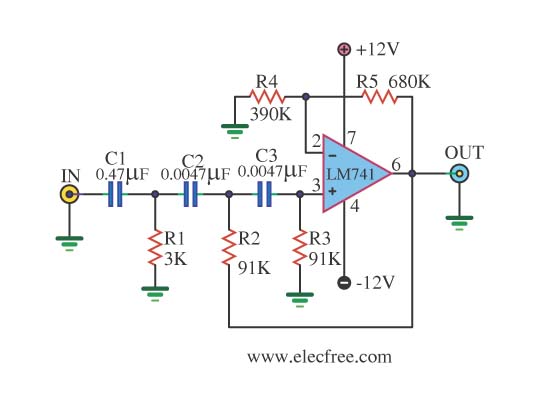
.png)
